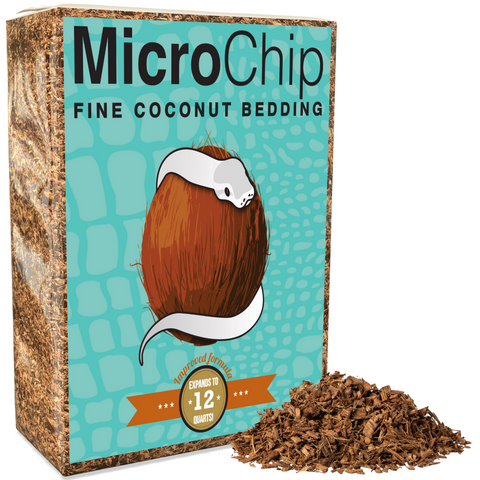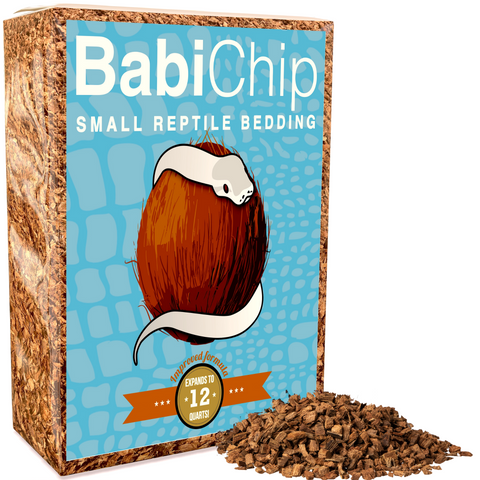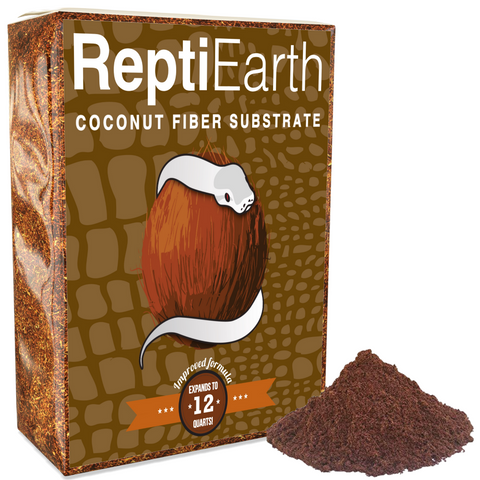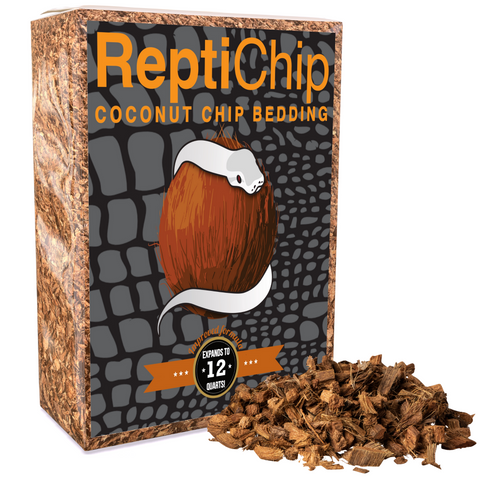Kimberley Rock Monitor
Varanus glauerti
Natural History
The Kimberley rock monitor is a medium-sized, arboreal and saxicolous reptile native to the rugged sandstone formations of northern Australia. It follows a life cycle typical of monitor lizards, beginning as a hatchling approximately 7.5 to 10 inches in total length. The species exhibits rapid early growth, fueled by an opportunistic diet, and reaches sexual maturity at around two to three years of age. Adults typically measure between 23 to 32 inches in total length, with a body mass that varies depending on regional prey availability. In the wild, individuals have been observed living beyond 10 years, with captivity potentially extending their lifespan to 15 - 20 years due to stable conditions and regular feeding. Like other monitors, females lay clutches of eggs, usually between 4 and 8, in carefully selected nest sites such as deep rock crevices or loose soil pockets. Incubation lasts between 100 to 120 days, influenced by ambient temperatures and humidity levels. The species does not exhibit parental care post-hatching, leaving the young to fend for themselves immediately upon emerging.
This monitor is highly specialized for life in rocky escarpments and is an adept climber, using its sharp claws and prehensile tail for stability. It is primarily diurnal, emerging in the early morning to thermoregulate before beginning its foraging activities. The Kimberley rock monitor is a highly active and alert predator, relying on a keen sense of sight and a forked tongue to locate food. It primarily preys upon insects, small reptiles, and occasionally bird eggs, using swift movements and precision strikes to capture prey. When threatened, it may flatten its body, gape its mouth to appear larger, or retreat into deep crevices that provide protection from predators. Unlike some larger monitors, this species is not highly aggressive but will use tail whipping and biting as defensive measures if provoked. It is also territorial, with males engaging in ritualized combat where they wrestle and attempt to dominate each other through strength displays.
In its native ecosystem, the Kimberley rock monitor plays an essential ecological role as both predator and prey. As an opportunistic hunter, it helps regulate populations of invertebrates and small vertebrates, controlling pest species that might otherwise become overabundant. In turn, it serves as a food source for larger birds of prey, snakes, and mammalian predators. Its reliance on rock crevices for shelter highlights its adaptation to extreme Australian climates, as these microhabitats provide insulation against temperature fluctuations. The lizard’s cryptic coloration, blending seamlessly into the sandstone environment, serves as a primary defense against predation, allowing it to remain undetected by both prey and potential threats. By occupying this niche, the Kimberley rock monitor contributes to the overall balance of its ecosystem, making it an integral part of its native habitat.
Conservation Status
The Kimberley rock monitor is classified as *Least Concern* on the IUCN Red List, indicating that, at present, the species is not facing immediate risk of extinction. This classification suggests that the wild population is stable, with no drastic declines recorded across its native range. The species is endemic to the rugged sandstone formations and rocky outcrops of northwestern Australia, particularly in the Kimberley region. Its distribution is somewhat restricted compared to other rock-dwelling monitor species, but its habitat remains largely intact in remote areas. While localized declines may occur in some regions, the overall population appears to be resilient due to the species’ adaptability to rocky environments that offer shelter and protection from many external threats. However, its status requires ongoing monitoring to ensure it remains secure in the face of environmental and human-induced changes.
Despite its current classification, the Kimberley rock monitor faces several threats that could negatively impact wild populations over time. Habitat degradation is a growing concern, particularly due to wildfires, which are increasingly intense and frequent in northern Australia. These fires can alter the vegetation structure of rocky habitats, reducing prey availability and exposing individuals to predation. Climate change poses another potential long-term threat, as shifting weather patterns and temperature extremes may influence humidity levels and food resources within their specialized habitat. Additionally, invasive species, particularly the toxic cane toad, pose a risk to some reptile species in northern Australia. While the full impact of cane toads on Kimberley rock monitor populations is not yet fully understood, predation on these toxic amphibians could have detrimental effects. Illegal collection for the pet trade is not currently a widespread issue, but any increase in demand for wild-caught specimens could threaten localized populations, particularly in areas with easier human access.
Conservation efforts aimed at protecting this species focus largely on habitat preservation and wildfire management. Many areas of the Kimberley region, including national parks and Indigenous Protected Areas, provide secure habitats where the species can thrive without significant human interference. Conservation initiatives in these regions often emphasize fire management strategies, such as controlled burns, to reduce the impact of large, destructive fires on native reptile populations. Additionally, research efforts are ongoing to assess the broader ecological impacts of climate change and invasive species on the region’s herpetofauna. While there are no specific captive breeding programs dedicated to large-scale conservation efforts for this species, responsible breeding in captivity by reptile enthusiasts and zoological institutions plays a role in maintaining genetically diverse populations outside of the wild. Continued habitat conservation and responsible captive management are essential to ensuring the long-term survival of the Kimberley rock monitor.
Native Range
The species is native to the remote and rugged regions of northwestern Australia, specifically within the Kimberley region of Western Australia. Its distribution is relatively restricted, as it is found only in this localized area, unlike some broader-ranging monitor species. Within its native range, it primarily inhabits rocky outcrops, escarpments, and sandstone formations, where it takes refuge among crevices and fissures. These rocky environments provide the necessary shelter, basking opportunities, and access to food sources that support the species’ survival.
The macrohabitat consists of tropical savanna and open woodland ecosystems, where the landscape is characterized by seasonal changes in temperature and precipitation. The climate in this region is monsoonal, with distinct wet and dry seasons. The wet season, spanning from November to April, brings heavy rains and high humidity levels, which can exceed 70%. The dry season, occurring from May to October, is marked by significantly lower humidity, reduced rainfall, and cooler temperatures at night. Daily temperatures can reach highs of 95–104°F during the warmer months, while the cooler season may experience daytime temperatures ranging between 68–86°F.
Within this broader environment, the species preferentially occupies well-structured rocky microhabitats that offer both concealment and thermoregulation opportunities. It often shelters in narrow rock crevices, beneath exfoliating rock slabs, or within deep fissures where ambient temperatures remain relatively stable. These microhabitats protect it from extreme heat during the hottest parts of the day and from potential predators. The availability of suitable basking sites is another crucial factor, as the species relies on frequent sun exposure to regulate its body temperature.
Elevation plays a role in its distribution, with the species primarily found at low to mid-elevations, typically ranging from near sea level up to around 1640 feet. Higher elevations within the Kimberley region can support its presence, provided that the requisite rocky terrain and climate conditions are met. The terrain itself is often composed of weathered sandstone, which creates a complex and highly structured habitat conducive to the species’ climbing and hiding behaviors.
Water availability is another important component of its environment. Although it inhabits generally arid to semi-arid regions, the species is often found in proximity to seasonal water sources such as springs, rock pools, or ephemeral streams that persist following monsoonal rains. These water sources support local prey populations, including insects and small vertebrates, ensuring a reliable food supply. Additionally, the vegetation in its habitat, including scattered eucalyptus trees, acacias, and spinifex grasses, provides further cover and influences the microclimate by offering shade and shelter.
The species’ survival is closely tied to the availability of these key environmental features, and its overall distribution is defined by the presence of intact rocky escarpments within the monsoonal savanna ecosystem of the Kimberley. Understanding these habitat preferences is vital for replicating appropriate captive conditions that support its natural behaviors and physiological needs.
Behavior
The Kimberley rock monitor is a diurnal species, meaning it is most active during daylight hours. In its natural habitat, it typically begins basking in the morning to absorb heat before engaging in foraging and territorial activities during the warmer parts of the day. Activity levels fluctuate with seasonal temperature changes; during the cooler dry season, it may reduce movement and seek insulated rock crevices to maintain body temperature. While it does not undergo true brumation, this species can exhibit periods of decreased activity when temperatures drop. During the breeding season, males become notably more active, engaging in territorial displays and searching for receptive females.
This species is primarily solitary, with individuals maintaining distinct territories centered around rocky outcrops, where they take refuge in crevices. Males are territorial and will defend their space from rivals through visual displays and occasional physical confrontations, which may include posturing, tail flicking, and wrestling. When mating, males pursue females persistently, often engaging in physical contact and biting as part of courtship. There is no evidence of parental care beyond egg-laying, as females deposit their eggs in suitable moist, protected locations, leaving them to incubate independently.
Environmental stimuli strongly influence behavior. The Kimberley rock monitor relies heavily on sight and chemosensory perception, utilizing its keen eyesight to detect movement and employing its forked tongue and Jacobson’s organ to analyze chemical cues in its environment. It responds quickly to temperature fluctuations, basking extensively in favorable conditions and retreating to shaded or insulated areas during extreme heat. Humidity also plays a role in regulating hydration, influencing behaviors such as seeking microhabitats with higher moisture levels. When confronted with predators or potential threats, this lizard employs a combination of rapid escape movements, camouflage against rocky surfaces, and defensive posturing. If cornered, it may use tail-lashing behaviors and even bite when severely threatened.
One of the most distinctive behavioral traits of this species is its exceptional climbing ability. Its sharp claws and strong limbs allow it to scale nearly vertical rock faces with ease, providing both a hunting advantage and a means of evading predators. When foraging, it actively scouts for insects, smaller lizards, and other invertebrates, using a swift and deliberate approach. Unlike ambush-oriented monitors, this species frequently stalks prey over short distances before striking with precision.
In captivity, behavior can differ slightly from what is observed in the wild. Without the same need to escape predators or compete for resources, captive individuals may display reduced territorial aggression, though males can still show dominance if housed together. Stress responses in captivity often manifest as excessive hiding, refusal to eat, or defensive tail-lashing when feeling threatened. Providing ample climbing structures, varied hiding spots, and an appropriate thermal gradient encourages natural behaviors. Monitors kept in appropriately enriched enclosures tend to exhibit more frequent exploration and natural foraging behaviors, while those in less stimulating environments may become lethargic or display repetitive stress behaviors. Feeding in captivity also differs from wild conditions, as prey availability is controlled, which can lead to less active foraging unless live food or enrichment methods such as scent trails are incorporated.
Overall, the Kimberley rock monitor exhibits a fascinating blend of agility, keen sensory perception, and territoriality, making it a highly engaging species in both the wild and captivity. Understanding its complex behavioral needs is crucial for maintaining its health and well-being in managed care.
Captivity Requirements
Enclosure Design
A properly designed enclosure is essential for successfully keeping this species in captivity, as it must accommodate both its arboreal and terrestrial behaviors while providing adequate space for thermoregulation and exercise. Juveniles can be housed in an enclosure measuring at least 36 inches long, 18 inches wide, and 18 inches tall, though upgrading as they grow is necessary. Adult Kimberley rock monitors require a minimum enclosure size of 4 feet long, 2 feet wide, and 2 feet tall, though larger enclosures are always beneficial to allow for increased climbing space and natural movement. Enclosures constructed from PVC, melamine, or sealed wood are excellent choices, as they retain heat and humidity better than glass while still allowing for proper ventilation. Front-opening enclosures with secure locking mechanisms are preferred, as they facilitate easy access for maintenance and handling while reducing the risk of escape.
The layout should mimic the rocky outcrops and crevices found in this species’ natural habitat. Vertical space is crucial, so the enclosure must be outfitted with climbing branches, ledges, and stacked artificial or natural rock formations. These not only provide opportunities for exercise but also serve as essential basking and retreat areas. Multiple hides should be included at both the warm and cool ends of the enclosure to allow for thermoregulation and stress reduction. A basking platform positioned under a heat source should be designed to accommodate the monitor's full body. Security is a major concern with this active and inquisitive species, as they are adept climbers and can squeeze through small gaps. Enclosures must be properly latched with escape-proof locks, and all ventilation panels should use fine mesh or perforated metal to prevent opportunistic escapes.
Lighting and Heating
Like all diurnal monitors, Kimberley rock monitors require a well-regulated temperature gradient and exposure to UVB radiation for optimal health. The basking temperature must be maintained between 120-130°F, allowing the lizard to thermoregulate effectively. Resting ambient temperatures throughout the enclosure should range from 85-90°F during the daytime, with a cooler section of around 75-80°F. Nighttime temperatures can safely drop to around 70-75°F to simulate natural conditions. Heat sources should consist of an overhead halogen basking lamp or a ceramic heat emitter, always controlled by a reliable thermostat to prevent overheating. Heat rocks should never be used, as they pose a risk of severe burns.
UVB lighting is critical for calcium metabolism and overall well-being. A linear T5 HO 10-12% UVB bulb should be used, positioned at an appropriate distance from the basking area to ensure adequate exposure without the risk of overexposure. The bulb must be replaced every 10-12 months, as UVB output diminishes over time even if the light remains operational. A consistent 12-hour photoperiod is recommended, simulating natural day and night cycles. Seasonal adjustments can be made by slightly reducing daytime lighting hours in winter and extending them in the summer to encourage natural seasonal behaviors. Providing exposure to natural, unfiltered sunlight whenever possible (while ensuring the animal’s safety) can also be highly beneficial.
Substrate and Enrichment
Selecting a suitable substrate is essential for maintaining cleanliness, replicating natural conditions, and ensuring the monitor's overall health. A loose, naturalistic substrate composed of a blend of ReptiEarth, fine sand, and soil provides an ideal mixture for burrowing, maintaining humidity, and offering a comfortable surface for movement. This substrate should be at least a few inches deep to allow for natural digging behaviors. ReptiChip’s coconut husk-based products are particularly beneficial due to their ability to retain moisture without encouraging bacterial growth.
Environmental enrichment is crucial for the well-being of this intelligent species. A variety of climbing structures, including sturdy branches, rock outcroppings, and ledges, should be incorporated to encourage natural arboreal activity. Providing multiple basking sites at different heights will allow for dynamic thermoregulation. Secure hiding places should be available throughout the enclosure; these can include cork bark slabs, artificial caves, or stacked rocks that form crevices similar to their wild habitat. When arranging these features, it is important to ensure they are stable and cannot shift under the animal’s weight to prevent injury. Additional enrichment elements, such as live plants, leaf litter, and even feeding puzzles, may help keep the monitor engaged and mentally stimulated.
Humidity and Hydration
Maintaining proper humidity levels is essential for hydration, respiratory health, and successful shedding. The enclosure should have a humidity range of approximately 50-70%, which can be achieved through a combination of misting, water sources, and the use of moisture-retaining substrates. Light misting once or twice daily can help maintain these levels, particularly in enclosures with higher ventilation. A shallow water dish should be provided at all times to allow for drinking and occasional soaking, though placement should ensure it does not overly saturate the substrate.
Monitoring humidity with a reliable digital hygrometer is necessary to ensure levels remain within the appropriate range. If humidity levels are consistently too low, incorporating a humid hide filled with damp sphagnum moss and ReptiEarth can provide an area for the monitor to regulate its hydration. For individuals with shedding difficulties, temporarily increasing humidity through additional misting or using a fogger during the night can assist in loosening retained skin. Observing hydration cues, such as skin elasticity and activity levels, will help ensure the monitor remains in optimal health.
Diet & Supplementation
The diet of this species is carnivorous, with a strong preference for invertebrates and small vertebrates in its natural habitat. In the wild, it actively hunts a wide range of arthropods, including grasshoppers, crickets, beetles, spiders, centipedes, and scorpions. It also preys on small lizards, geckos, and occasionally consumes small mammals, nestling birds, and eggs when available. Opportunistic feeding behavior has been noted, with individuals taking advantage of seasonal food availability. While its diet consists mostly of live prey, it may also scavenge on carrion when the opportunity arises. Juveniles focus almost entirely on smaller, soft-bodied invertebrates, while adults gradually incorporate larger prey items into their diet as they grow.
This species is an active forager rather than an ambush predator, meaning it relies on keen visual acuity and chemosensory detection via its forked tongue to locate food. It frequently uses its agile climbing abilities to search rock crevices, tree hollows, and under loose bark for hiding prey. Its strong limbs and sharp claws aid in digging out insects and small vertebrates from leaf litter and soil. Unlike some other monitor species, it does not rely on constriction or venom to subdue prey but instead uses rapid strikes followed by vigorous chewing and shredding motions to process food. This species’ hunting strategies are particularly effective in its rocky, arid environment, where it must cover ground efficiently to locate scattered food sources.
Dietary needs change significantly throughout its life stages. Hatchlings and juveniles require more frequent feedings due to their rapid growth, often consuming food every other day. Their diet consists almost exclusively of soft-bodied invertebrates, which provide easily digestible protein. Subadults and adults transition to a more varied diet that includes both larger insects and vertebrates. Environmental factors such as seasonal temperature fluctuations also influence feeding frequency. During the cooler, drier months, individuals naturally reduce their food intake due to decreased metabolic activity, whereas in warmer periods, they feed more regularly to build energy reserves.
In captivity, providing a diet that closely mimics its natural intake is crucial for maintaining proper health. A varied selection of live feeders, such as crickets, roaches, superworms, and silkworms, should form the bulk of its diet. Occasional offerings of small vertebrates, such as frozen-thawed pinky mice, can help supplement nutritional needs but should not be overfed to prevent obesity and liver problems. It is essential to dust prey items with calcium and vitamin D3 supplements regularly, especially for growing juveniles and gravid females, to prevent metabolic bone disease. Gut-loading insects with nutrient-rich vegetables and grains enhances their nutritional profile and ensures they provide optimal sustenance. Unlike some monitor species, it does not require a high frequency of rodent meals, and over-reliance on fatty or nutrient-poor prey can lead to serious health complications.
Common feeding issues in captivity include food refusal, which is often linked to improper temperatures, stress, or lack of environmental stimulation. Ensuring adequate basking temperatures and a spacious enclosure with climbing opportunities can encourage active foraging behavior. Obesity is a frequent concern, particularly in individuals fed excessive amounts of high-fat prey, so monitoring diet portion sizes and maintaining an appropriate feeding schedule is necessary. Malnutrition can occur if prey variety is insufficient, leading to deficiencies in essential nutrients. Offering a diverse range of insects, occasional eggs, and appropriately sized vertebrate prey helps replicate the natural diet. Providing environmental enrichment through naturalistic feeding methods, such as placing food items in hidden crevices or using feeding tongs to mimic live prey movement, can stimulate instinctual hunting behaviors and contribute to the species’ overall well-being.
Proper dietary management is essential to maintaining optimal health and longevity in captivity. By replicating natural feeding strategies and ensuring a nutritionally balanced diet, keepers can support this species’ active metabolism, strong musculature, and overall vitality. Understanding its foraging habits, seasonal dietary adjustments, and specific nutrient requirements allows for a more enriching and sustainable captive care routine.
Reproduction
Kimberley rock monitors reach sexual maturity at approximately two to three years of age, though size is a more reliable indicator of reproductive readiness than age. Males tend to grow larger and develop broader heads than females, exhibiting sexual dimorphism that becomes more pronounced as they mature. During the breeding season, males engage in ritualistic combat, where they wrestle and attempt to overpower rivals to establish dominance. This behavior plays a crucial role in natural mate selection, though in captivity, courtship often proceeds without direct male competition. Once a male has selected a receptive female, he initiates courtship by tongue-flicking her body and nudging her with his snout. If she is receptive, he will proceed to mount her and attempt copulation. Mating pairs should be observed closely to prevent aggression, as some females may reject advances, leading to defensive or escape behaviors.
Reproductive activity in Kimberley rock monitors is primarily influenced by environmental cues, mimicking the seasonal shifts of their native habitat. In the wild, breeding occurs during or immediately following the wet season when conditions are warm and humid, providing an optimal environment for egg production. To replicate these conditions in captivity, seasonal fluctuations in temperature, humidity, and photoperiod are essential. Gradually lowering temperatures in the cooler months and subsequently increasing them to 90–95°F in the warmer season can stimulate reproductive behavior. Relative humidity should be increased during the breeding season, closely mimicking the wetter months of their natural range. Light cycles should also be adjusted to reflect seasonal photoperiod changes, expanding daylight hours during warmer months to signal the onset of breeding conditions.
Kimberley rock monitors are oviparous, laying clutches of eggs following successful copulation. To ensure reproductive success, a well-structured breeding environment is necessary. A nesting site with deep, moist substrate, such as a combination of sand and soil, should be provided to encourage egg deposition. Ideally, the laying chamber should maintain humidity levels around 80% to prevent desiccation of the eggs. Nesting sites should be placed in a secure area of the enclosure, as females seek seclusion during the egg-laying process. Breeding pairs should be monitored for compatibility, as not all individuals will readily accept a mate. Some females may reject persistent males or become stressed if breeding attempts are forced in an unsuitable environment. It is often beneficial to introduce the male into the female's enclosure rather than vice versa, as this reduces territorial stress.
Challenges in captive breeding primarily stem from incompatibility, stress, or inadequate environmental conditions. If a pair fails to engage in courtship behaviors after environmental adjustments, it may be necessary to condition them further with a controlled brumation period. Reducing temperatures slightly for several weeks before warming them again can mimic the seasonal transition necessary to induce breeding activity. Stress is another significant factor, particularly if enclosures lack sufficient hiding areas or if repeated introductions result in aggression. Ensuring enclosures have ample climbing structures and secluded areas can reduce tension. Additionally, a well-balanced diet with adequate calcium and vitamin supplementation is essential for females undergoing egg production, as poor nutrition can lead to reproductive complications, including egg binding. Monitoring the pair for signs of stress, aggression, or compatibility issues is crucial throughout the breeding process, allowing for necessary adjustments to encourage successful reproduction.
Incubation & Neonate Care
The Kimberley rock monitor is an oviparous species, meaning it reproduces by laying eggs. Following successful copulation, females typically lay clutches of four to six eggs, although larger or smaller clutches are possible depending on the individual’s health, size, and nutritional status. The eggs are usually deposited in well-hidden, moist nest sites, such as crevices in termite mounds or under rocks, where stable temperatures and humidity levels support successful embryonic development.
In captivity, eggs should be carefully transferred to an artificial incubation setup if natural incubation is not feasible. The ideal incubation temperature ranges between 82–86°F, as deviations outside this range may affect embryonic development. Maintaining relative humidity around 80% during incubation is crucial to prevent desiccation, as overly dry conditions can cause the eggs to collapse or embryos to fail during development. A common and effective incubation substrate is vermiculite or perlite mixed with water at a 1:1 ratio by weight, which provides adequate moisture retention and gas exchange. If temperature-dependent sex determination occurs in this species, higher or lower incubation temperatures may influence the offspring's sex ratio; however, further research is needed to confirm this in Kimberley rock monitors.
Embryonic development typically lasts between 100 and 120 days, though incubation duration can vary based on subtle temperature fluctuations. As hatching approaches, the embryos will absorb the remaining yolk, and the neonates will use their egg tooth to slit the eggshell. Hatchlings may take several hours or even over a day to fully emerge, often resting inside the egg after making the initial incision. It is crucial to maintain consistent temperature and humidity levels during hatching, as sudden environmental changes can lead to complications such as retained membranes or dehydration. Once hatched, neonates should be left undisturbed until their yolk sacs are fully absorbed, which typically occurs within the first 24 hours.
Neonates should initially be housed in a separate enclosure from adults to reduce the risk of predation, stress, or competition for food. A well-ventilated enclosure with a securely fitted lid is essential, as these agile lizards are excellent climbers and can easily escape through small openings. The enclosure should provide multiple hiding spots, climbing structures, and a thermal gradient ranging from 90–95°F in the basking spot to around 75–79°F on the cooler side. Humidity should be maintained at approximately 50–70%, with occasional misting ensuring proper hydration while preventing excessive dampness.
Proper hydration is vital during the first few weeks of life, as dehydration can lead to health issues such as retained shed or organ stress. A small, shallow water dish should be provided, and lightly misting the enclosure can encourage drinking behavior. Neonates typically begin feeding within a few days of hatching, once their yolk reserves are depleted. They should be offered appropriately sized live prey, such as pinhead crickets, small roaches, and flightless fruit flies. Feeding should occur daily, with prey dusted in calcium and vitamin supplements to promote healthy bone development. As they grow, the diet can gradually include larger insects and occasional vertebrate prey.
Handling should be minimized during the early weeks to reduce stress and allow proper acclimation to their environment. When necessary, interactions should be gentle and brief, using slow, deliberate movements to avoid startling the hatchlings. Common health concerns for neonates include incomplete shedding, metabolic bone disease due to nutritional deficiencies, and failure to thrive if environmental conditions are suboptimal. Regular monitoring and prompt interventions can help mitigate these issues, ensuring proper growth and development.
By carefully managing incubation conditions and neonatal care, captive-bred Kimberley rock monitors can thrive and develop into healthy, robust individuals. This early-stage husbandry sets the foundation for long-term success, reducing stress and mortality rates while promoting natural behaviors and optimal physiological health.
Conclusion
Successfully maintaining this species in captivity requires careful attention to its natural behaviors, environmental needs, and dietary requirements. As an active, arboreal, and highly alert reptile, it demands a spacious and well-structured enclosure that replicates its native rocky habitat, providing ample climbing opportunities, hiding spots, and basking areas for effective thermoregulation. Proper lighting and heating, particularly the provision of UVB exposure and a high basking temperature, are crucial for metabolic health and maintaining natural activity levels.
Dietary management plays a significant role in ensuring longevity and overall well-being. A varied menu of gut-loaded invertebrates, supplemented with appropriate vitamins and minerals, mirrors the nutritional diversity found in its wild diet. Avoiding excessive feeding of high-fat prey such as rodents minimizes the risk of obesity and associated health issues. Additionally, maintaining proper hydration and humidity levels supports shedding, respiratory health, and overall physiological functions.
While this species can thrive in captivity, replicating seasonal cues through photoperiod adjustments and humidity changes enhances natural behaviors, including breeding activity. Careful management of courtship, nesting, and incubation conditions enables successful reproduction, contributing to conservation-focused captive breeding efforts. Hatchlings and juveniles require structured environments and consistent nutritional support to develop properly, with key considerations given to temperature stability, hydration, and prey size.
Ultimately, responsible husbandry ensures that individuals exhibit natural behaviors while maintaining peak health over their lifespan. Providing an enriching environment, adhering to proper dietary guidelines, and maintaining optimal environmental conditions result in a thriving and well-adjusted specimen. Dedicated captive care not only benefits the reptiles themselves but also serves to deepen understanding of their ecological roles and conservation needs in the wild.











